Precious Metal Catalysts
-
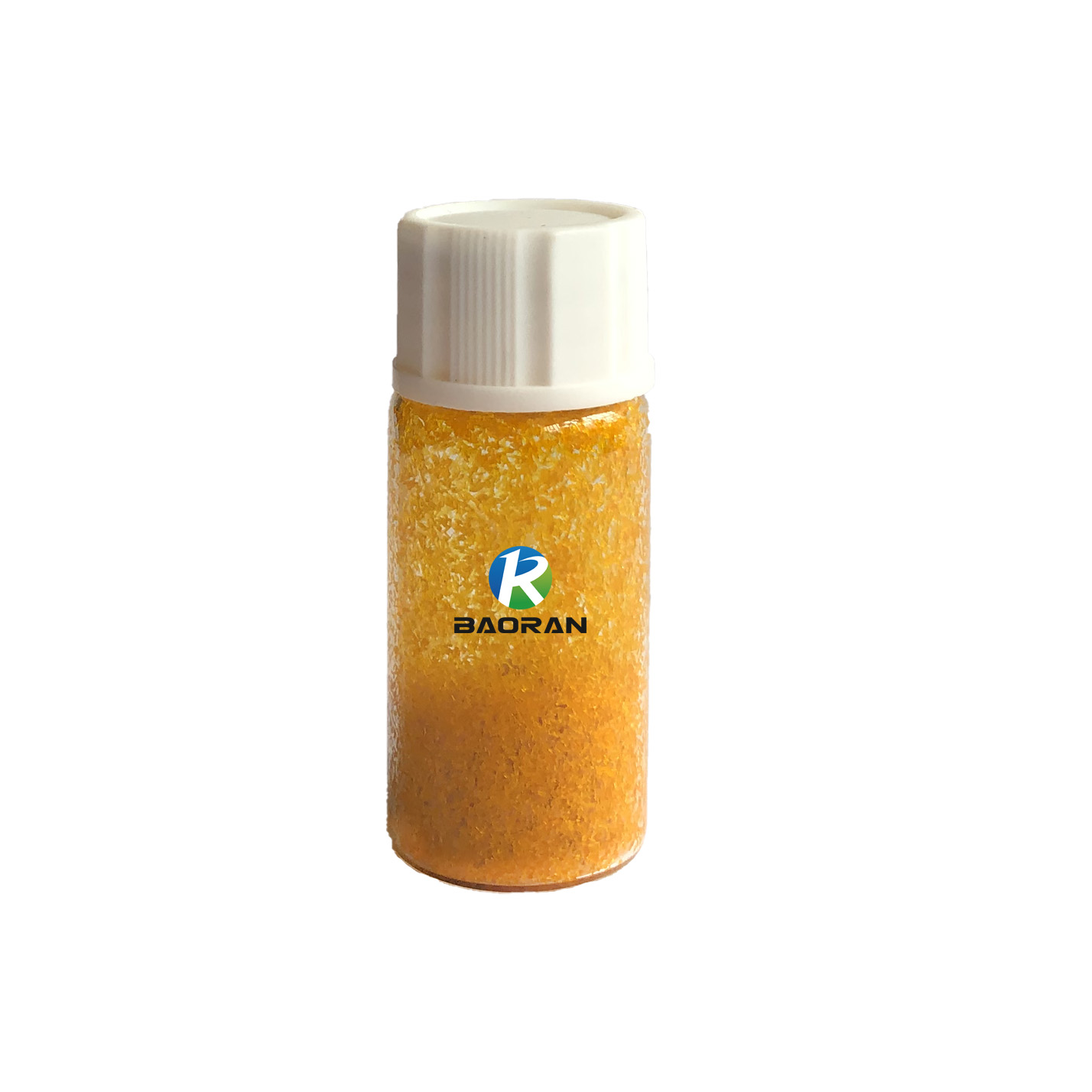
99.9% Gold(III) chloride CAS 13453-07-1
Chemical name: Gold(III) chloride
Other name: Gold(III) chloride hydrate
CAS No.: 13453-07-1
Purity: 99.9%
Au content: 49%min
Molecular Formula: AuCl3·nH2O
Molecular Weight: 303.33 (anhydrous basis)
Appearance: Orange crystal powder
Chemical Properties: Gold(III) chloride is a orange crystal powder, easy to deliquescence, soluble in cold water, the aqueous solution is strongly acidic, soluble in ethanol, ether, slightly soluble in ammonia and chloroform, insoluble in CS2. Used for photography, gold plating, special ink, medicine, porcelain gold and red glass, etc. -
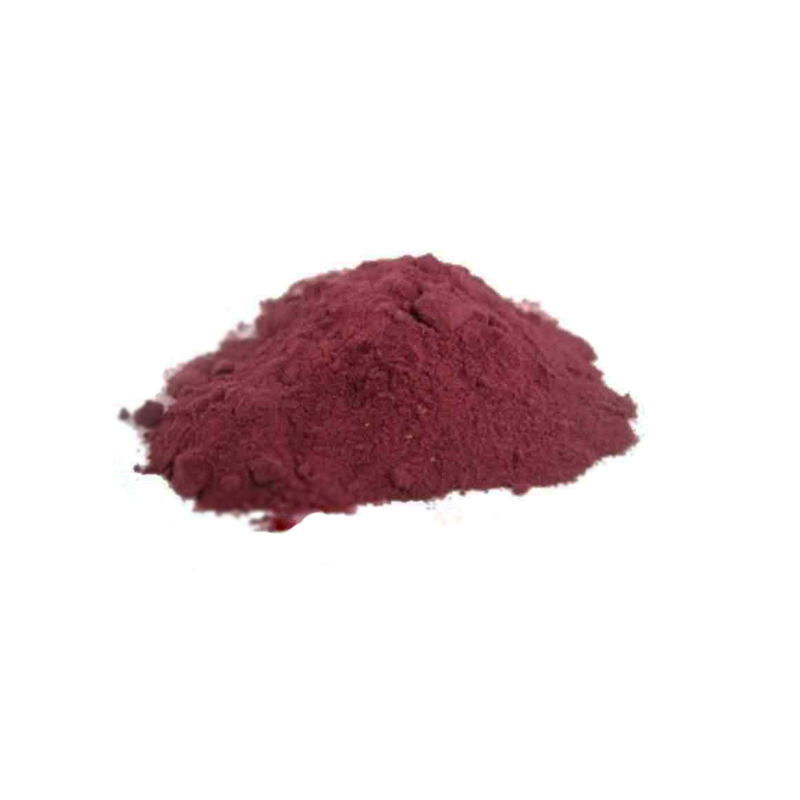
99.9% Palladium(II) chloride CAS 7647-10-1
Chemical name: Palladium(II) chloride
Other name: Palladium dichloride
CAS No.: 7647-10-1
Purity: 99.9%
Pd content: 59.5%min
Molecular Formula: PdCl2
Molecular Weight: 177.33
Appearance: Reddish-brown crystal / powder
Chemical Properties: Palladium chloride is a commonly used precious metal catalyst, which is easily deliquescent and soluble in water, ethanol, hydrobromic acid and acetone. -
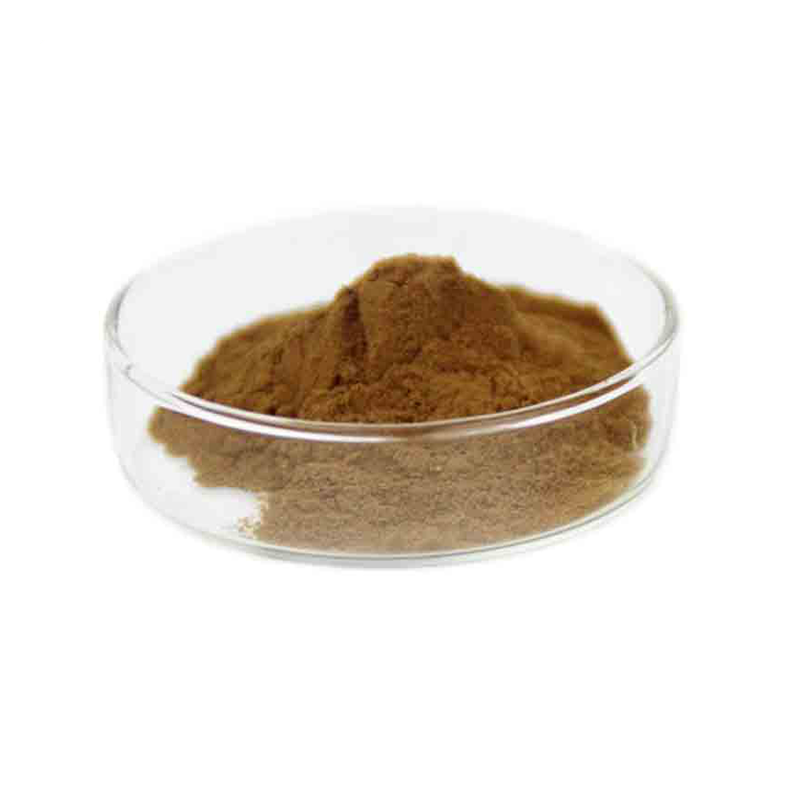
99.9% Palladium(II) acetate CAS 3375-31-3
Chemical name: Palladium(II) acetate
Other name: Palladium diacetate
CAS No.: 3375-31-3
Purity: 99.9%
Pd content: 47.4%min
Molecular Formula: Pd(CH3COO)2, Pd(OAc)2
Molecular Weight: 224.51
Appearance: Brown yellow powder
Chemical Properties: Palladium acetate is a yellowish brown powder, soluble in organic solvents such as chloroform, dichloromethane, acetone, acetonitrile, diethyl ether, and will decompose in hydrochloric acid or KI aqueous solution. Insoluble in water and aqueous sodium chloride, sodium acetate and sodium nitrate solutions, insoluble in alcohol and petroleum ether. Palladium acetate is a typical palladium salt soluble in organic solvents, which can be widely used to induce or catalyze various types of organic synthesis reactions. -
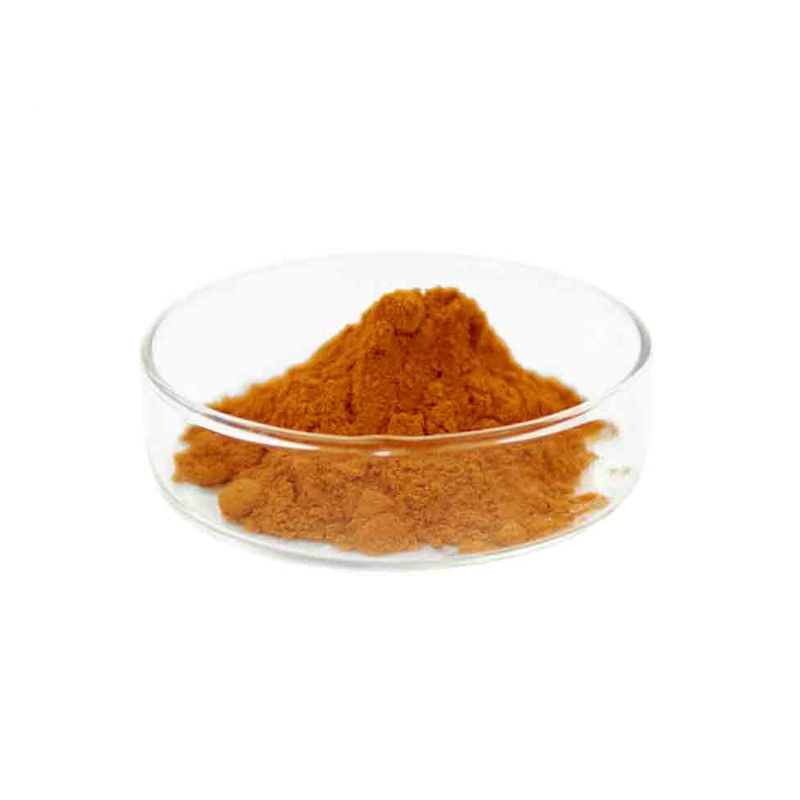
99.9% Sodium tetrachloropalladate(II) CAS 13820-53-6
Chemical name: Sodium tetrachloropalladate(II)
Other name: Palladium(II) sodium chloride
CAS No.: 13820-53-6
Purity: 99.9%
Pd content: 36%min
Molecular Formula: Na2PdCl4
Molecular Weight: 294.21
Appearance: Brown crystalline powder
Chemical Properties: Sodium tetrachloropalladate(II) is a brown crystalline powder. insoluble in cold water. -

99.9% Tetrakis(triphenylphosphine)palladium(0) CAS 14221-01-3
Chemical name: Tetrakis(triphenylphosphine)palladium(0)
Other name: Pd(PPh3)4, Palladium-tetrakis(triphenylphosphine)
CAS No.: 14221-01-3
Purity: 99.9%
Pd content: 9.2%min
Molecular Formula: Pd[(C6H5)3P]4
Molecular Weight: 1155.56
Appearance: Yellow or greenyellow powder
Chemical Properties: Pd(PPh3)4 is a yellow or greenyellow powder, soluble in benzene and toluene, insoluble in ether and alcohol, sensitive to air, and stored in cold storage away from light. Pd(PPh3)4, as an important transition metal catalyst, can be used to catalyze a variety of reactions such as coupling, oxidation, reduction, elimination, rearrangement, and isomerization. Its catalytic efficiency is very high, and it can catalyze many reactions that are difficult to occur under the action of similar catalysts. -

99.9% Chloroplatinic acid CAS 18497-13-7
Chemical name: Chloroplatinic acid hexahydrate
Other name: Chloroplatinic acid, Platinic chloride hexahydrate, Hexachloroplatinic acid hexahydrate, Hydrogen hexachloroplatinate(IV) hexahydrate
CAS No.: 18497-13-7
Purity: 99.9%
Pt content: 37.5%min
Molecular Formula: H2PtCl6·6H2O
Molecular Weight: 517.90
Appearance: Orange crystal
Chemical Properties: Chloroplatinic acid is orange crystal with pungent odor, easy to deliquescence, soluble in water, ethanol and acetone. It is an acidic corrosive product, which is corrosive and has strong moisture absorption in the air. When heated to 360 0C, it decomposes into hydrogen chloride gas and generates platinum tetrachloride. Reacts violently with boron trifluoride. It is the active ingredient of hydrodehydrogenation catalyst in petrochemical industry, used as analytical reagents and catalysts, precious metal coating, etc. -

99.9% Platinum(IV) oxide CAS 1314-15-4
Chemical name: Platinum(IV) oxide
Other name: Adam’s catalyst, Platinum dioxide, Platinic oxide
CAS No.: 1314-15-4
Purity: 99.9%
Pt content: 80%min
Molecular Formula: PtO2
Molecular Weight: 227.08
Appearance: Black powder
Chemical Properties: Platinum(IV) oxide is a black powder, insoluble in water, concentrated acid and aqua regia. It is widely used as a catalyst for hydrogenation in organic synthesis. -
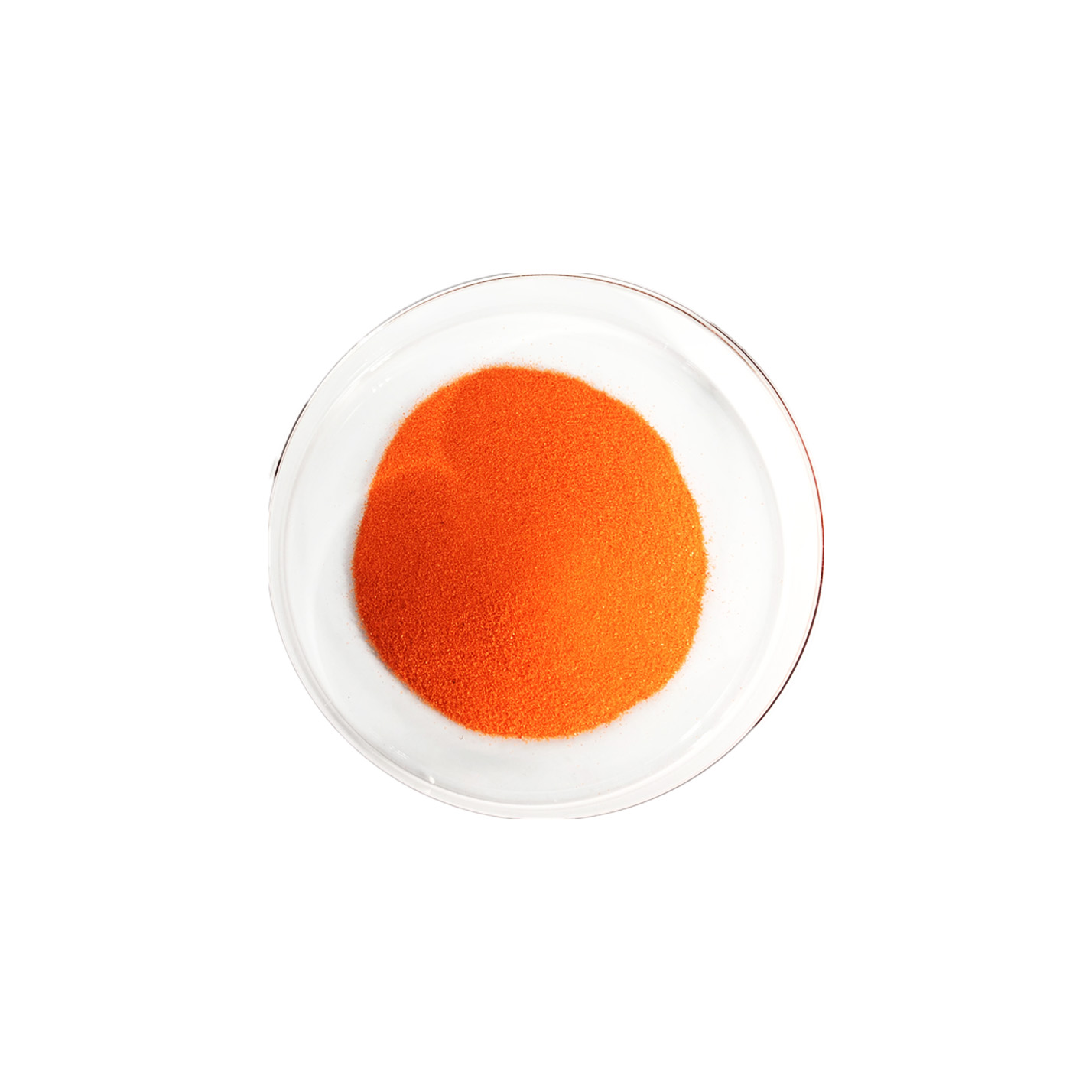
99.9% Potassium tetrachloroplatinate(II) CAS 10025-99-7
Chemical name: Potassium tetrachloroplatinate(II)
Other name: Potassium platinum(II) chloride, Dipotassium tetrachloroplatinate
CAS No.: 10025-99-7
Purity: 99.9%
Pt content: 46.4%min
Molecular Formula: K2PtCl4
Molecular Weight: 415.09
Appearance: Orange red crystal powder
Chemical Properties: Potassium tetrachloroplatinate(II) is red crystalline powder, soluble in water, insoluble in alcohol and organic reagents, stable in air. Widely used as a starting material for the manufacture of various platinum complexes and drugs. It is also used in the preparation of precious metal catalysts and precious metal plating. -
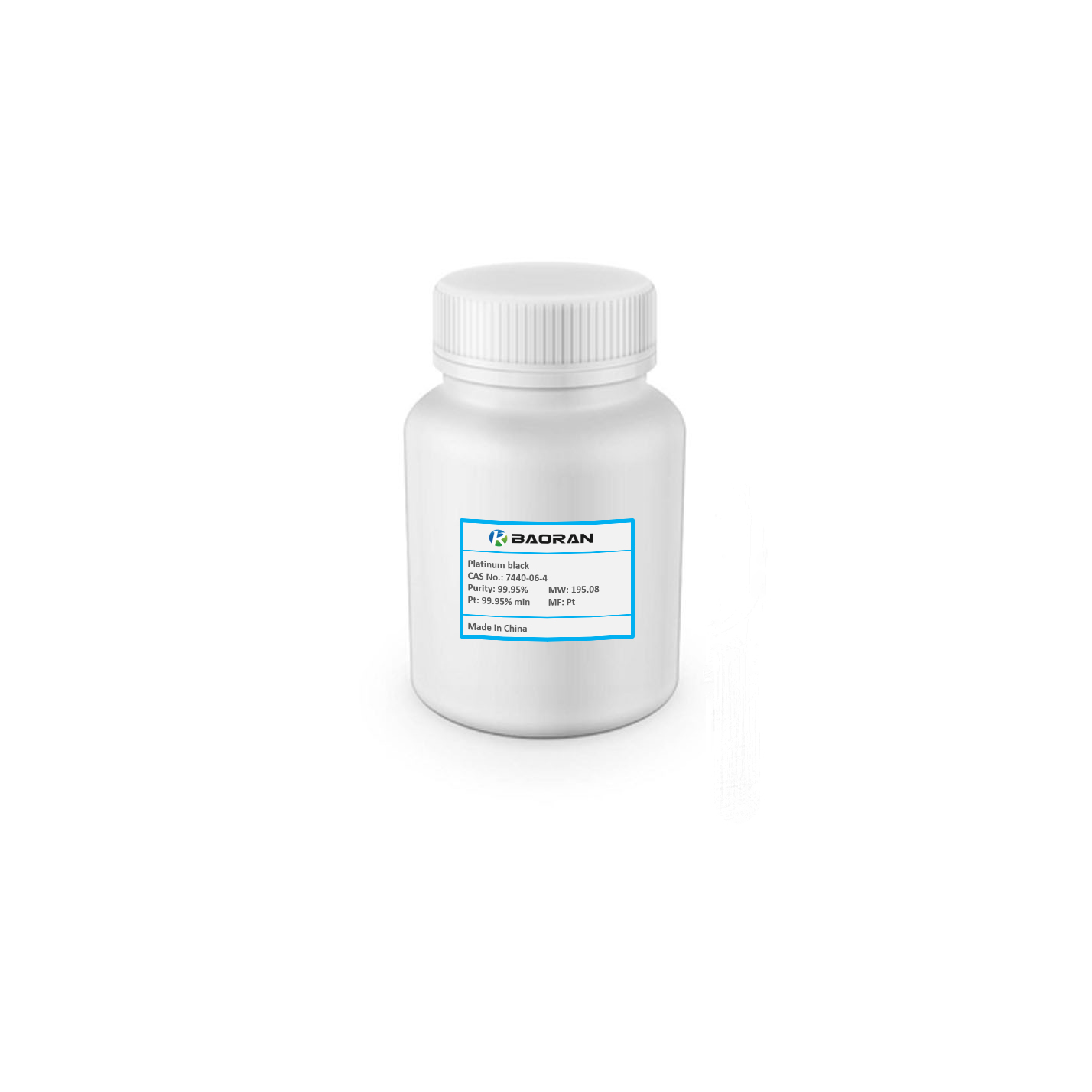
99.95% Platinum black CAS 7440-06-4
Chemical name: Platinum black
Other name: Pt black
CAS No.: 7440-06-4
Purity: 99.95%
Pt content: 99.95%min
Molecular Formula: Pt
Molecular Weight: 195.08
Appearance: Uniform black sponge
Chemical Properties: Platinum black is a black powder/sponge, insoluble in inorganic or organic acids. Soluble in aqua regia. Used as catalyst, gas absorbent, etc. -

99.9% Ruthenium(III) chloride hydrate CAS 14898-67-0
Chemical name: Ruthenium(III) chloride hydrate
Other name: Ruthenium trichloride, Ruthenium(III) chloride
CAS No.: 14898-67-0
Purity: 99.9%
Ru content: 37%min
Molecular Formula: RuCl3·nH2O
Molecular Weight: 207.43 (anhydrous basis)
Appearance: Black solid
Chemical Properties: Ruthenium(III) chloride hydrate is a black massive crystal, easy to deliquescence. Insoluble in cold water and carbon disulfide, decomposed in hot water, insoluble in ethanol, soluble in hydrochloric acid. It is used for the determination of sulfite, the manufacture of chlororuthenate, as electrode coating material, etc. -

99.9% Hexaammineruthenium(III) chloride CAS 14282-91-8
Chemical name: Hexaammineruthenium(III) chloride
Other name: Ruthenium hexammine trichloride
CAS No.: 14282-91-8
Purity: 99.9%
Ru content: 32.6%min
Molecular Formula: [Ru(NH3)6]Cl3
Molecular Weight: 309.61
Appearance: Light yellow powder
Chemical Properties: Hexaammineruthenium(III) chloride is a light yellow powder, soluble in water. It has good water solubility and stable structure, and does not undergo a series of complex hydrolysis like ruthenium trichloride. It is often used as a synthetic raw material for ruthenium catalysts and other high-end reagents. -

99.9% Silver nitrate CAS 7761-88-8
Chemical name: Silver nitrate
Other name: Nitric acid silver(I) salt
CAS No.: 7761-88-8
Purity: 99.9%
Ag content: 63.5%min
Molecular Formula: AgNO3
Molecular Weight: 169.87
Appearance: White crystalline powder
Chemical Properties: Silver nitrate, white crystalline powder, easily soluble in water, ammonia, glycerol, slightly soluble in ethanol. It is used in photographic emulsions, silver plating, mirror making, printing, medicine, hair dyeing, testing chloride ions, bromide ions and iodine ions, etc. It is also used in the electronics industry. -

5%/10% Palladium on carbon CAS 7440-05-3
Chemical name: Palladium on carbon
Other name: Pd/C
CAS No.: 7440-05-3
Assay (Pd content): 5% / 10% (dry basis), matrix activated carbon support
Molecular Formula: Pd
Molecular Weight: 106.42
Appearance: Black powder
Chemical Properties: Pd/C catalyst is a supported hydrorefining catalyst formed by loading metal palladium on activated carbon. It has the characteristics of high hydrogenation reduction, good selectivity, stable performance, small charging ratio during use, repeated application, and easy recovery. It is widely used in the hydroreduction refining process of petrochemical industry, pharmaceutical industry, electronic industry, fragrance industry, dye industry and other fine chemicals. -

99.9% Rhodium tris(2-ethylhexanoate) CAS 20845-92-5
Chemical name: Rhodium tris(2-ethylhexanoate)
Other name: Tris(2-ethylhexanoate)rhodiuM (III)
CAS No.: 20845-92-5
Purity: 99.9%
Rh content: 13%min
Molecular Formula: C24H45O6Rh
Molecular Weight: 532.52
Appearance: Green powder
Chemical Properties: Rhodium tris(2-ethylhexanoate) is a green powder. It is an important precious metal compound, commonly used in the chemical and electronic industries -

99.9% Hydrogen tetrachloroaurate(III) hydrate CAS 16903-35-8
Chemical name: Hydrogen tetrachloroaurate(III) hydrate
Other name: Chloroauric acid
CAS No.: 16903-35-8
Purity: 99.9%
Au content: 49%min
Molecular Formula: HAuCl4·nH2O
Molecular Weight: 339.79 (anhydrous basis)
Appearance: Golden crystal
Chemical Properties: Chlorauric acid is golden yellow or orange-yellow needle-like crystals, easily deliquescence in the air, soluble in water, soluble in alcohol and ether, slightly soluble in chloroform. Used for gold plating, making red glass, analytical reagents, etc.